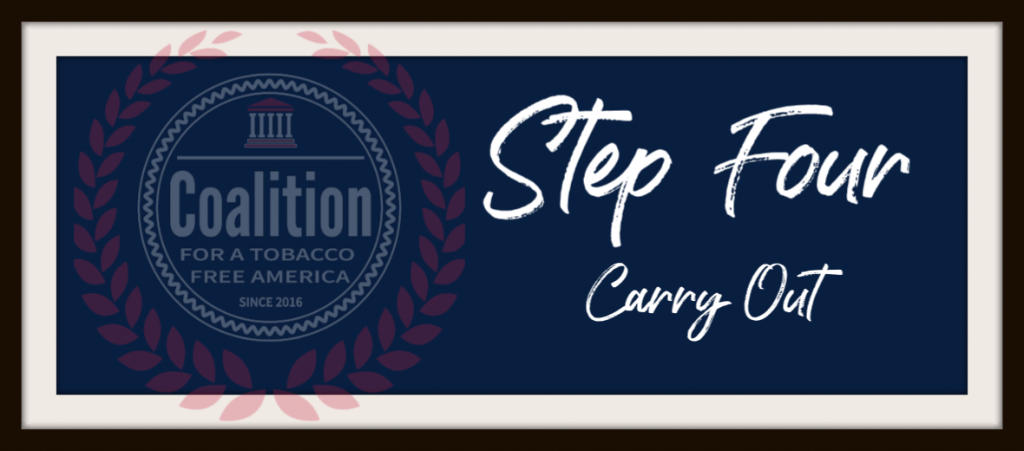Taking a multi-tiered strategy to quitting smoking may be helpful in your overall success.
The Game Plan for Quitting
Before you consider which method would work best for you, having a plan and making goals will help keep you on track with your goal to stop smoking.

Step One – Pre-Plan
Here are some questions to ask yourself while considering quitting. Being honest with yourself and learning more about your motives will help you keep to your schedule.
- Why do I want to quit?
- What do I dislike about smoking?
- How does my smoking affect me? my health? my family?
- How would my life be different if I did not smoke?
- What are the financial impacts of my addiction

Step Two – Make a commit date
After answering those questions and reflecting upon your answers, get out your calendar and pick a “Quit Date.” Be sure to give yourself some time to research different methods and plan out the different strategies you can use to quit. Also, allow for time to speak with your doctor before starting any

Step Three – Make a plan
After you have your “quit date,” decide what methods you want to use. Will you go cold turkey? Use NRT’s? Consult a therapist or acupuncturist? Did your friend tell you that hypnotism helped them?
Support System
Research your options and gather a support system to help you keep your goal. Tell your friends and family that you are going to quit and ask them to check in on you and ask you about your progress. Social media may be a viable option to get lots of support, Ask people to do activities with you where you are unable to smoke; this could be going for a walk in a mall or going to see an indoor show. Your family and friends love you and want you around for a long time, let them help you.
Triggers
In addition, think about triggers that could be obstacles in your success, For example, do you like to smoke while going to a certain place? Do you enjoy a cigarette with coffee in the morning? Do you smoke when you are bored or stressed? T
Knowing your triggers ahead of time can help you plan to deal with them. Talking with someone, exercising, trying meditation, or other forms of relaxation may help reach your goals.
Cravings
Another part of your plan should be learning how to deal with cravings when they hit. We all know what it is like to have a craving, this could be ice cream or cookies, and we all know how hard they are to resist. When the need for a cigarette hits, how will you deal with it? Some ways to handle cravings would be:
- Go for a walk or go to the gym – physical exercise helps.
- Chew some sugar-free gum.
- Call a friend.
- Keep your hands busy, do a puzzle or play a video game.
Nicotine Withdrawal Symptoms
These symptoms vary depending on how long you have used tobacco. Nicotine affects the brain and can help you feel more energy, help with depression, reduce appetite, and increase concentration. The more you use nicotine, the more your body wants it. Nicotine Withdrawl symptoms make it very hard to quit are very strong for about a week after stopping. Some of these symptoms include:
- intense cravings for nicotine
- sweating
- nausea and abdominal cramping
- constipation and gas
- headaches
- coughing
- sore throat
- insomnia
- difficulty concentrating
- anxiety
- irritability
- depression
- weight gain
Some people may benefit from Nicotine Replacement Therapy, such as patches or gum, to help alleviate symptoms. Even if you do not choose to use an NRT, these symptoms will get better with time and go away eventually.

Step Four – Carry out your plan
Congratulations! After making a plan, you are ready for your “Quit Date!” You are prepared to become a non-smoker. You are prepared to manage cravings, deal with triggers, and know what to expect. Keep at it, and you will be smoke-free before you know it,

